Let’s shift our focus to India. The turmoil in Amritsar, a city in northern India, was becoming more intense. Protests against British rule provoked riots and attacks on British residents.
On April 13, 1919, a large but docile group of Indians were squeezed in a fenced area in the heart of the city. They might be unaware or have disobeyed, that such a meeting was prohibited by the British Commander Reginald Dyer.
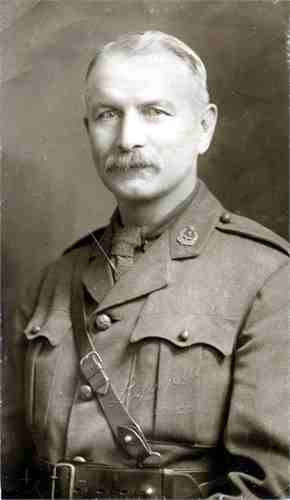
While an Indian leader was giving speech, Gen. Reginald Dyer arrived with fifty soldiers. Without warning, bullets rained towards the people in that meeting. The random firing lasted for ten seconds. Three hundred and seventy-nine (379) people died; one thousand and one hundred (1,100) were injured. In the end, Dyer’s justification for what he did was to teach the Indians a lesson.
The tragedy in Amritsar has a lot to do with the animosity of India after WWI. Do not forget that during the war, millions of Indians served overseas for Britain. They suffered great hardships and many casualties. They hoped that after the peace conference in Paris, they would acquire the independence they were yearning for. It was promised by the British; but the British broke their promise and made only minor changes. India remained under British imperialism.
A new Indian leader emerged in 1920’s ‒ Mohandas Gandhi. He led and unified all the Indians in the liberation movement. With great admiration, the Indians named him Mahatma (Great Soul).
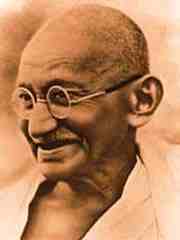
Mohandas came from a middle class Hindu family. At the age of 19, he went to England to study law. On his return to India after his studies, he tried to practice law and set up his own law firm. He eventually joined a law firm in South Africa because thousands of Indians were migrating there. The Indians first started working as helpers and eventually they became residents. Some of the Indian settlers were doing well, but the majority of them were suffering and experiencing racial prejudice from white rulers in South Africa.
Upon his return to India, for 20 years, Gandhi opposed the laws that discriminated Indians. However, in his fight against injustice, he used non-violent (passive) resistance. He called it “satyagraha”, which means “soul force”. Mahatma Gandhi had to endure many hardships and sufferings before gaining true independence.
Let us now take a look at the impact of the Treaty of Versailles on China. At the Paris Peace Conference, the Allies conferred to Japan control over some of Germany’s territories in China. This incident roused the anger of the nationalist Chinese. They accused their leaders of betraying them in Versailles. On May 4, 1919, a student protest erupted in Beijing. They cried out that China may be invaded by foreigners but should never be given away. They could kill the Chinese, but they would never give up!
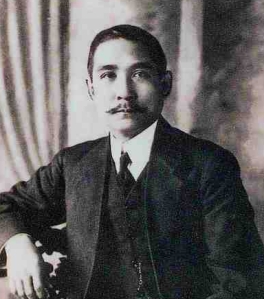
In 1921, Sun Yat Sen and his Kuomintang or Nationalist party, established a government in South China. Sun’s plan was to organize an army, subdue the warlords, and propagate and enforce the laws of his government throughout China. When the Western powers rejected Sun’s requests to help him establish a democratic China, he surmised that the true and loyal friend of the Chinese Revolution was Soviet Russia. Because of this, Russian experts helped the Nationalists with their plan to defeat the warlords.
After Sun’s death in 1925, a strong and young officer in the army, Chiang Kai Sek, succeeded Sun. Chiang received military training in Japan. This new leader was determined to unify China completely but had little interest in democratic and communistic goals.
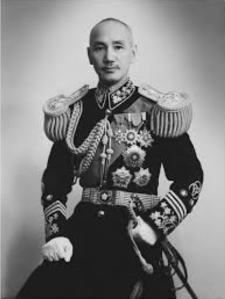
In 1926, Chiang Kai Sek began the march to Northern China — destroying and conquering any warlords on their way to conquer Beijing. In the midst of their campaign, he stopped to invade what he thought was a threat to his power — the Chinese Communist Party. Landlords and business owners supported Chiang. But peasants in cities like Shanghai were believers and supporters of the Communists.
As early as 1927, under Chiang’s command, Kuomintang soldiers killed members of the Communist Party and the workers who assisted them. In Shanghai and elsewhere, thousands of people were killed by the Kuomintang. These incidents led to a bitter and fierce civil war for 22 years.
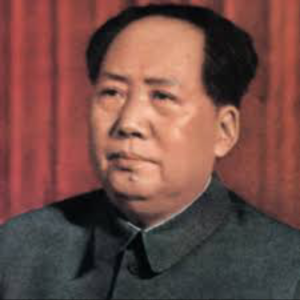
Among the communists who survived the attack by Chiang and his soldiers was a young revolutionary soldier named Mao Tse Tung who came from a peasant family. Contrary to the earlier Chinese Communists, Mao believed that the Communists should seek support not only from small urban working classes, but also from the poor majority. Thus, under Mao’s leadership, the Communist enticed and organized the poor in Southeast China. They distributed lands to the peasants and offered them education and health care. Meanwhile, Chiang was determined and continued to destroy the “Red Bandits” (Communists).
As famine and turmoil hit China and other parts of the world, a strong earthquake occurred on March 31, 1931, in Managua, Nicaragua; 2,500 people died. Not long after, another strong earthquake struck on April 27, 1931, in the Zangezur Mountains, Armenia-Azerbaijan border (USSR) and 2,800 people died.
More than 3 months later, in August 10, 1931, a stronger earthquake occurred in Near Fuyun, Xinjiang, China; 10,000 were killed. Then on March 2, 1933, an earthquake struck Sanriku, Japan and killed 3,000 people. Most of the casualties were not due to the tremor but by the tsunami whose wave height reached 28.7 m (94 ft). Again, on August 25, 1933 an earthquake struck North of Maowen, Sichuan, China and 9,300 people died.
On January 15, 1934, a powerful earthquake occurred in Bihar, India-Nepal and 10,700 people died. In the same year (1934), Mao and his 100,000 followers undertook a massive retreat to avoid the Kuomintang. This retreat was called “The Long March”.
Within a year, Mao’s army had traveled over 6,000 miles (10,000 kms). They face almost daily attacks as they crossed wild mountains, deep ravines, and raging rivers. After going through extreme hardships, only 20,000 were left.
For decades, the “Long March” has remained a symbol of Communist heroism among the Chinese in conflict with Kuomintang. The reason was, during the “Long March”, Mao imposed strict discipline upon the Communist soldiers. They must obey three basic rules: (1) Don’t take anything, not even a needle or a yarn, from the people; (2) Surrender any spoils or seized possessions; (3) The people should be treated fairly ‒ pay for commodities and avoid damaging crops. The attitude and treatment of Mao’s people pleased the peasants who experienced misfortunes at the hands of the Kuomintang.
And at the end of the ”Long March”, the Communists set up a new camp in the far north of China. There, Mao rebuilt his force and devised a new strategy. He claimed that their “great retreat” was a success.
While Chiang pursued and persecuted the Communists throughout the country, China encountered and faced a new danger. In 1931, Japan invaded northeast Manchuria (China) to expand Japan’s growing empire. And because of Japan’s attacks, some of Chiang’s generals had their doubts. Chiang’s generals realized they were wasting force, life, and strength against their fellow Chinese while foreigners were invading them. Eventually, Chiang was forced to collaborate with the Communist group led by Mao to fight against the Japanese soldiers.
As the battles raged, an earthquake erupted in Miao-li, Formosa (Taiwan) on April 20, 1935, and 3,270 people died. Just over a month later, on May 30, 1935, a powerful earthquake occurred in Quetta, Pakistan (Baluchistan, India); 30,000 people died. And on July 16, 1935 an earthquake struck in Hsin-Chu, Formosa (Taiwan) and killed 2,740.
In 1937, the Japanese attacked (remember this date and event) China Proper. This time, Chinese cities were bombed using modern warplanes. Simultaneous with the airstrikes, the well-trained Japanese soldiers launched their ground assault. They invaded eastern China, as well as Beijing and Guangzhou. Chiang Kai Sek and his army retreated to a remote area and moved their capital to Chong Quing. The Japanese established a puppet government in Nanjing, the former Nationalist capital. Japanese atrocities and killings during the occupation came to be known as the “Rape of Nanjing.”
Let’s take a look at Japan. What did the Treaty of Versailles and the First World War bring about? Let us focus on the events that took place in Japan from the 1920’s to 1930’s, when the intensified nationalism and economic ascent put Japan into militarism. As a consequence, the empire’s expansion almost covered the whole of Asia.
In 1920’s, Japan was moving towards greater democracy. Political parties were gaining influence and members of the diet [the Japanese Parliament] were asserting their power. By 1925, all male adults were given the right to vote. Western ideas on women’s rights created changes. However, in general, Japanese women remained subordinate to men.
Remember that during WWI, Japan’s economy enjoyed remarkable growth. Their exports to Allied countries soared up successfully. While Western powers were at war in Europe, Japan expanded their influence over East Asia. And by the 1920s, business leaders (Zaibatsu) were very powerful. They influenced politicians through bribes, and pushed them to approve legislation that favored international trade for their interest.
At the same time, Japan signed, in the spirit of world peace, a treaty with the United States and Britain. The treaty stated that Japan would limit the force of their navy. The Japanese government would also reduce their budget for military spending. As such, they would focus more on commerce rather than expanding and strengthening their military force.
However, despite Japan’s seemingly good situation, they were facing serious problems. And by the 1920’s, the economy had declined slowly and steadily as a result of Japan’s modernization. Only city dwellers could afford affluence unlike the poor and the peasants in the remote areas. And indeed, even low-income factory workers were attracted to Marx and Lenin’s socialist ideals.
Likewise, in cities, the younger generation revolted against tradition. They emulated Western customs and clothing. They also opposed parental authority because of the West’s point of view in giving more importance to individual liberty. Because of these incidents, tensions between the government and the military emerged. Conservatives, especially the military, criticized corruption in the government ‒ including bribery by the powerful Zaibatsus. They also condemned the influence of the West in disregarding the basic Japanese values of obedience and respect to authorities.
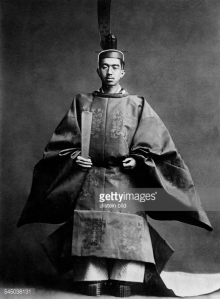
In 1926, Hirohito was seated as the emperor of Japan. At the beginning of Hirohito’s leadership, Japan experienced extraordinary growth and economic success. However, by 1929, the Great Depression had affected the Pacific Region. Japan was hit with devastating effects. Japan’s exports, which was their economic lifeline, suffered tremendous decline.
Foreign buyers could no longer afford Japan’s exported products. Many of the city dwellers have lost their jobs. The poor and the peasants in the provinces were starving. These occurrences aggravated the military and ultranationalists’ discontent. They condemned the politicians for conceding with the West’s demand for Japan to stop their overseas expansion, whereas Imperialism in the West continued to expand through conquest and industrialism.
As the crisis escalated, Japanese nationalists demanded that their country continue to push for the expansion of their empire in Asia. They concluded that it would contribute significantly to the raw materials they needed and provide outlets for Japan’s rapidly growing population.
And in the 1930’s, ultranationalists succeeded in gaining the popular support needed for the conquest of countries overseas. The majority also supported their stand against Western powers. Members of patriotic society assassinated politicians and business leaders who opposed military expansion. Military leaders conspired to overthrow the government. And in 1936, they briefly occupied the center of Tokyo.
Japan strengthened and expanded their military force. Even their weapons and warplanes were modernized. And in 1937, Japan invaded mainland China with modern planes and powerful bombs. (Keep this date and event in mind because it is connected to the fulfillment of the first trumpet in the seventh seal of Christ’s Revelation.)